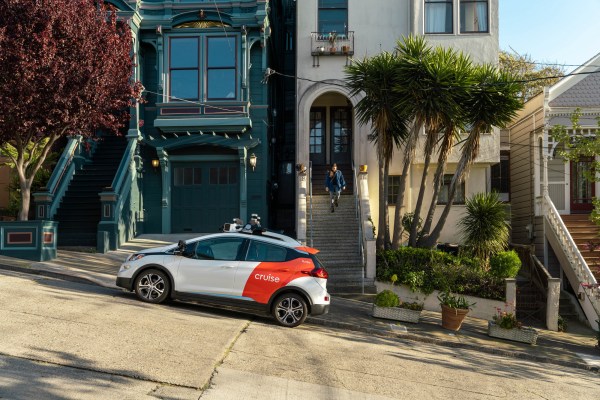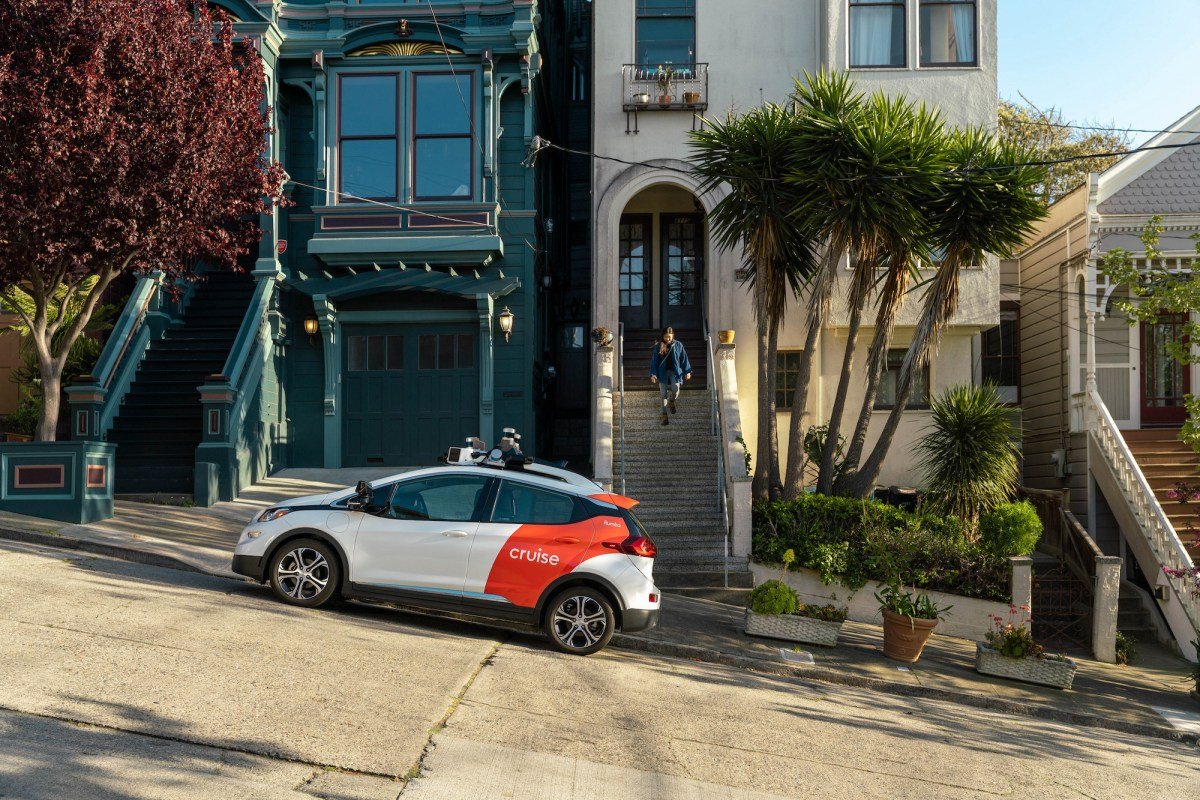
The San Francisco Police Department is investigating an October 2 incident that left a woman stuck underneath a Cruise robotaxi after being hit by a human-driven vehicle.
Video captured by Cruise and viewed by TechCrunch shows a robotaxi braking and then running over a pedestrian who is laying in the street after being struck by a human-driven car and launched in front of the autonomous vehicle. Cruise said the driver of the vehicle who initially hit the pedestrian fled the scene.
Cruise said in its account of the events that the robotaxi “braked aggressively” to minimize impact. Still, the pedestrian was run over and then stuck under the vehicle, according to police as well as video from local bystanders that show the person under the robotaxi.
TechCrunch viewed the video, which shows a Cruise vehicle stopped at a traffic light and then proceeding once it turned green. The cameras, which include a forward-facing, rear-facing and side-facing cameras, captures a human-driven vehicle in the left lane accelerating through the intersection. Moments later, the video shows a person, who has entered the street on the far left side, being hit by the human-driven car, then flying over the front hood, up onto the roof of the vehicle and down the right side before falling into the street. The pedestrian landed in the lane to the right of the human-driven vehicle, which is where the Cruise robotaxi was.
Police are still investigating the matter. A San Francisco Police Department spokesperson released a statement:
On 10/02/23 at approximately 9:31 pm officers responded to 5th and Market Streets regarding a vehicle collision involving a pedestrian. Officers arrived on scene and discovered an autonomous vehicle struck an adult pedestrian. Officers rendered aid and summoned medics to the scene and transported the pedestrian to the hospital. The medical condition of the pedestrian is unknown at this time.
The autonomous vehicle remained on scene and did not have an occupant at the time of the collision. The operator of the autonomous vehicle is cooperating with the investigation. We believe that another vehicle that was not an autonomous vehicle may have been initially involved in the collision, but the vehicle or driver were not present at the scene during our investigation. The SFPD Traffic Collision Investigations Unit is leading the investigation and is looking into the factors that lead to this collision. Anyone with information is asked to contact SFPD at 415-575-4444 or text a tip to TIP411 and begin the message with SFPD.
Cruise was quick to weigh in on the incident, taking to social media site X to give its account.
“At approximately 9:30 pm on October 2, a human-driven vehicle struck a pedestrian while traveling in the lane immediately to the left of a Cruise AV,” the post said. “The initial impact was severe and launched the pedestrian directly in front of the AV. The AV then braked aggressively to minimize the impact. The driver of the other vehicle fled the scene, and at the request of the police the AV was kept in place. Our heartfelt concern and focus is the wellbeing of the person who was injured and we are actively working with police to help identify the responsible driver.”
The event is the latest in a string of crashes and other incidents such as blocking traffic and driving into wet cement that has plagued Cruise operations in San Francisco. Based on Cruise’s account it appears the company wasn’t at fault in the initial impact of the pedestrian. An investigation should help determine if the AV could have avoided the pedestrian at all.
But in a city already divided on robotaxis, whether Cruise is to blame might not matter. The incident comes at a critical time for Cruise, a company trying to scale robotaxi operations in San Francisco and begin testing and eventually charge for rides in more than a dozen U.S. cities.
Cruise and Waymo won approval in August from the California Public Utilities Commission to expand commercial operations in San Francisco. The CPUC, the agency that regulates ride-hailing operations including those involving robotaxis, approved Cruise and Waymo on August 10 for final permits that allow the companies to operate 24 hours a day, seven days a week, expand their fleets and charge for rides throughout the city.
Just days later, Cruise was involved in a crash with an emergency response vehicle, prompting the California Department of Motor Vehicles, which also regulates autonomous vehicles, to request Cruise reduce its fleet by 50% until it could complete an investigation.
Source link

